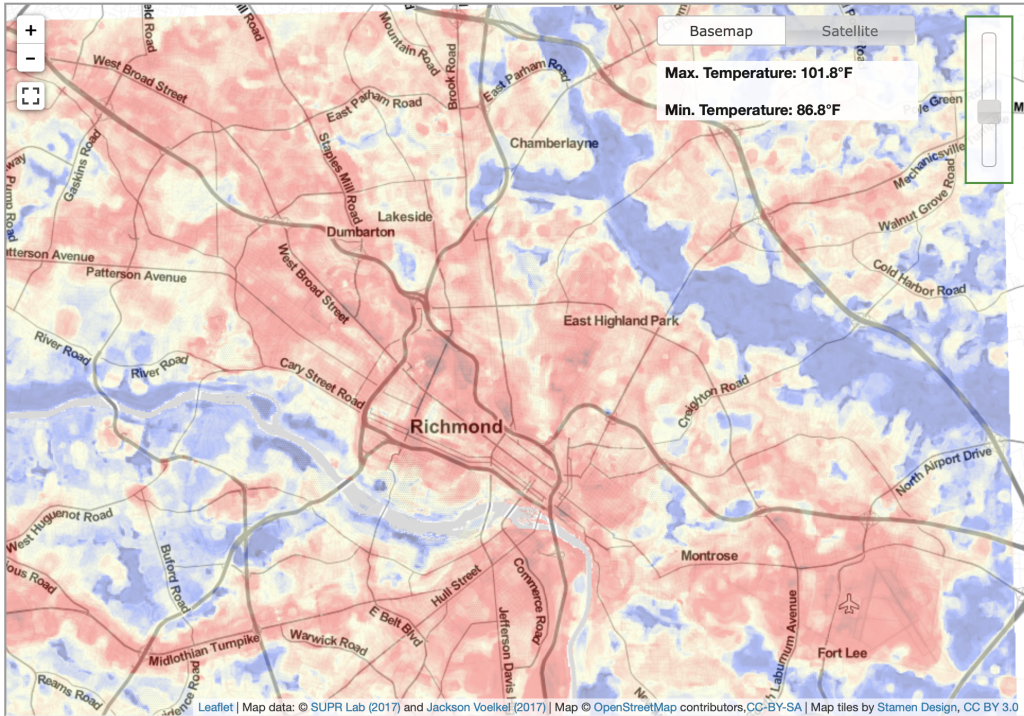Jun 16, 2021
How You Can Reduce Your Heat Island Effect & Keep Cool This Summer

Summer is finally here, and it is HOT! But did you know that besides the weather itself, what’s on your building and around your neighborhood can have a huge impact on the temperature in your surrounding area?
The number of trees in your vicinity and the shade they make, the color of asphalt on the streets near you and even the roof of your house all play a role in making your building, your neighborhood and your whole city hotter or cooler. It’s called the urban heat island effect when buildings and street-level features in areas with little tree cover or green space heat up from direct sun and then send that heat out into the area. Here’s how the U.S. Environmental Protection Agency defines it:
Heat islands are urbanized areas that experience higher temperatures than outlying areas. Structures such as buildings, roads, and other infrastructure absorb and re-emit the sun’s heat more than natural landscapes such as forests and water bodies. Urban areas, where these structures are highly concentrated and greenery is limited, become “islands” of higher temperatures relative to outlying areas. Daytime temperatures in urban areas are about 1–7°F higher than temperatures in outlying areas and nighttime temperatures are about 2-5°F higher.
Our Throwing Solar Shade® curriculum has encouraged high school students to learn more about urban heating. This citizen-science program is run in conjunction with the Science Museum of Virginia and the National Energy Education Development (NEED) program. Last year, four students from the program were even invited to present their research on a national stage hosted by the U.S. Department of Energy Solar Decathlon.
This innovative curriculum builds on the work of Science Museum of Virginia Chief Scientist Jeremy Hoffman, PhD, to study and mitigate the urban heat-island effect in the city of Richmond, Virginia, called Throwing Shade RVA. Research by Dr. Hoffman and his colleagues has shed light on how our activities as humans and the changes we make to the land have directly impacted the environment in which we live.
Whether you live in an urban area with lots of hot parking lots and sidewalks, in a cooler suburb or even out on a farm, right now you’re probably feeling the heat of the summer and looking for ways to cool down. To help you keep yourself cool, we’re going to draw on Dr. Hoffman’s research to suggest a few simple changes to your building and your neighborhood to reduce its heat island effect:
Plant a Tree: Dr. Hoffman studied the vulnerability to heat waves that communities experience in Richmond by analyzing the proportion of tree canopy to paved areas. In this research he found that with the help of shade from trees only, a city can feel significantly cooler than without. Everybody knows that sitting under the shade of a tree on a hot summer day is a more comfortable than enduring the sun directly. Shade from trees prevents asphalt from soaking up so much heat from the sun and then radiating that heat out into the area, raising the air temperature. So, plant a tree and cut the heat in your neighborhood.
Paint Your Parking Lot or Rooftop: One of the students invited to the Solar Decathlon studied the effect that various colors of paint would have on the heat radiated from her school’s parking lot. She found that simply by painting the parking lot white, the temperature dropped by a whole degree Fahrenheit. If doing this on a larger scale, say in your entire neighborhood, imagine what the results could be. Just get permission first before you start spilling white paint on parking spots!
Install Solar Panels on Your Roof: Just like planting trees to create shade, putting solar panels on a roof can have the same impact. As we explain in more detail in our recently published guide for a group of customers very concerned with reducing heat leakage — cold storage warehouses for food, beverages and pharmaceuticals — the power that solar panels generate can cut your electric bill while the shade the panels provide on your roof will help reduce the amount of heat that gets into your indoor space. Though heat rises as a rule, waves of hot air can travel downwards, even through the surface of a roof.
Cultivate a “Green Roof”: In Louisiana, many cities have started creating rooftop gardens. The primary function of these roofs is to catch rainfall. In New Orleans green roofs have proven to help reduce stormwater runoff in an area well known for being susceptible to flooding. At the same time, green roofs have also been proven to reduce temperatures city wide by up to five degrees Fahrenheit. Compared to conventional rooftops, a green roof can also cut temperatures on the roof itself by 30-40 degrees Fahrenheit.
Install a “Cool Roof”: Much like a green roof, a roof painted white offers high solar reflectance. The white color causes sunlight and heat to bounce off of the roof, reducing the heat that is absorbed and available to leak down into a building. With a cool roof, a property can stay up to 50-60 degrees Fahrenheit cooler than with a conventional roof.
Upgrades to improve the built environment both on the roof and on the street are especially suitable for commercial buildings, and represent a way that schools, hospitals and businesses can control high summer air conditioning bills while also contributing to a cooler neighborhood by combatting the urban heat island effect.
Such unconventional but practical investments can pay for themselves in a single season through lower summer electric bills. But greening your parking lot or your roof will pay dividends for years to come while contributing to the fight against climate disruption.